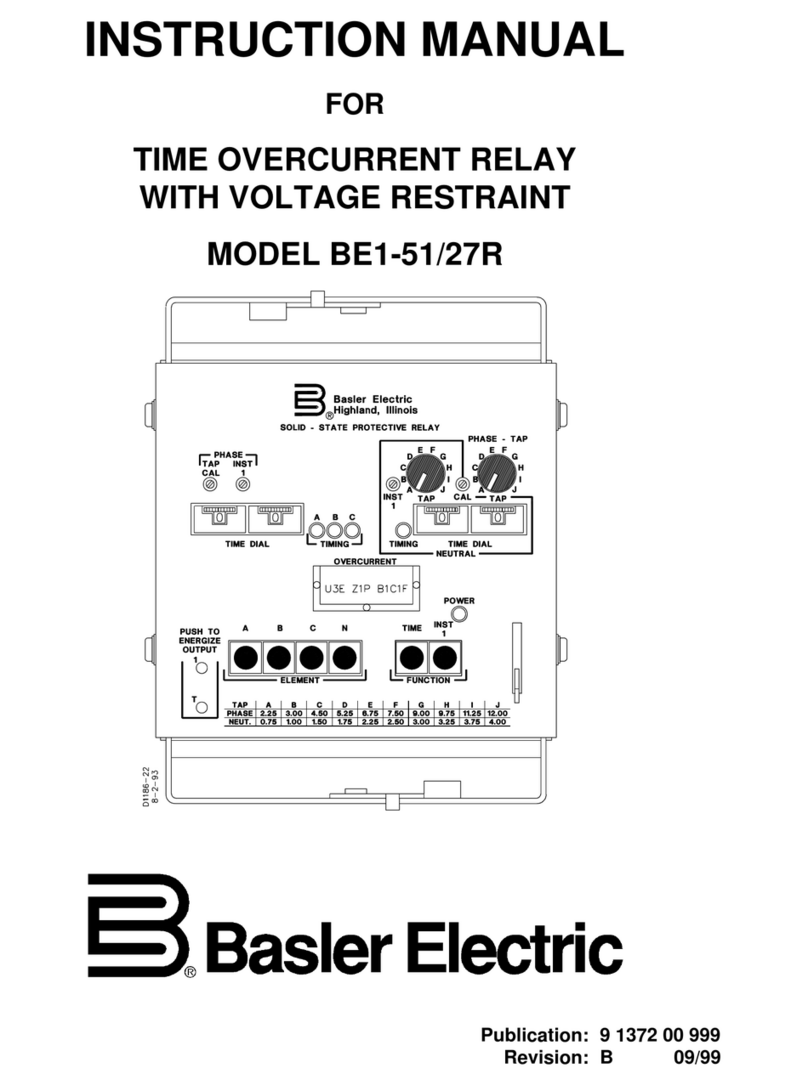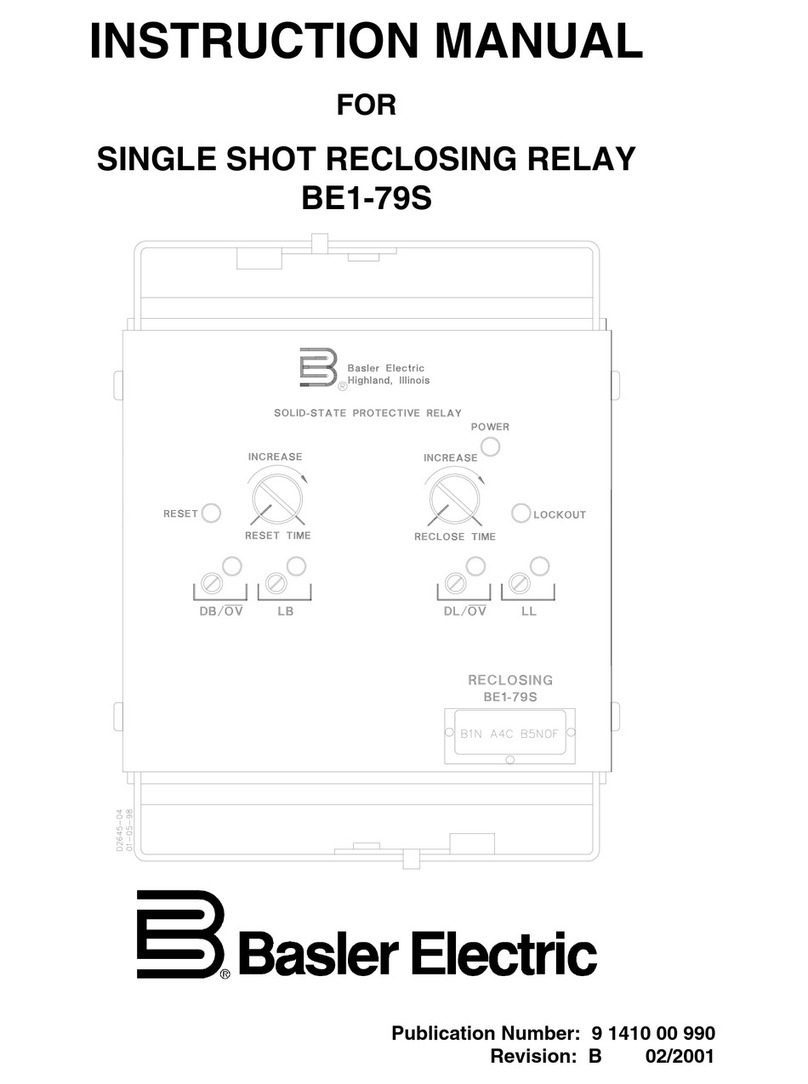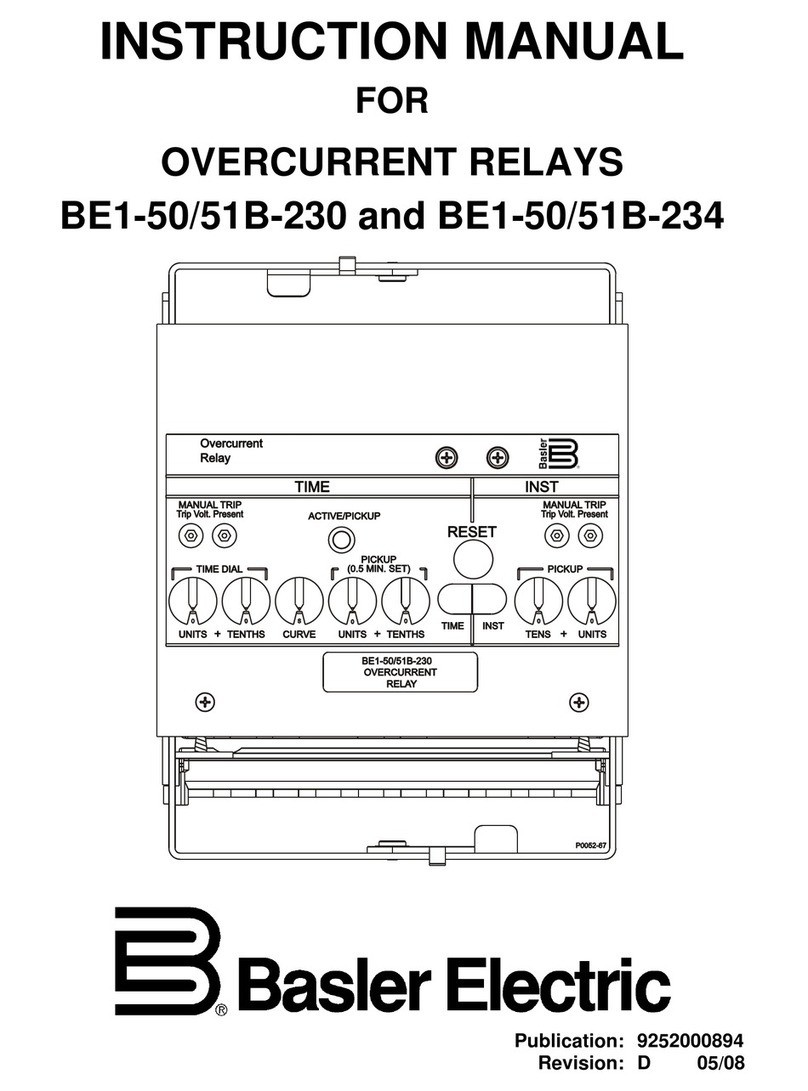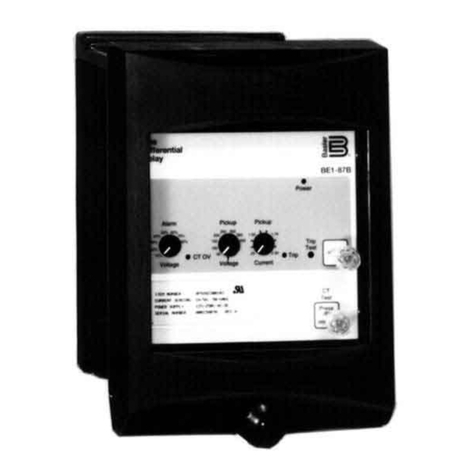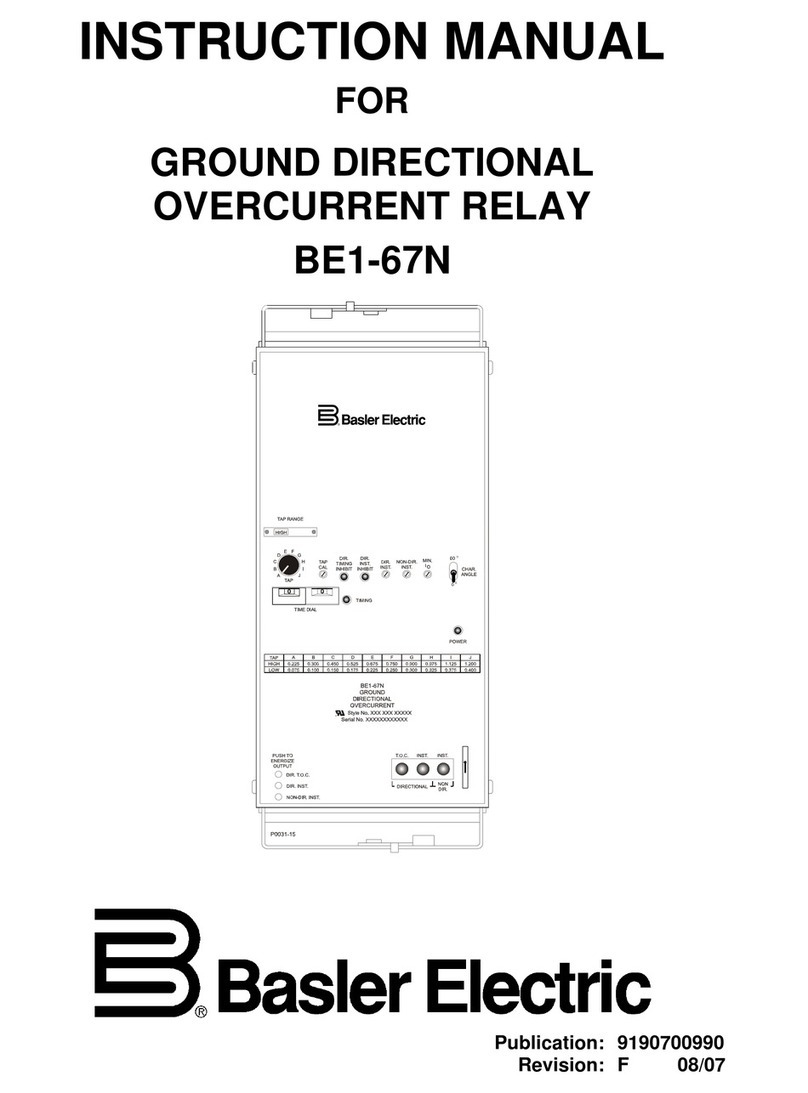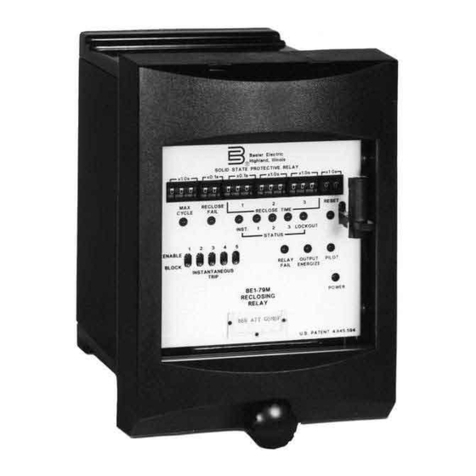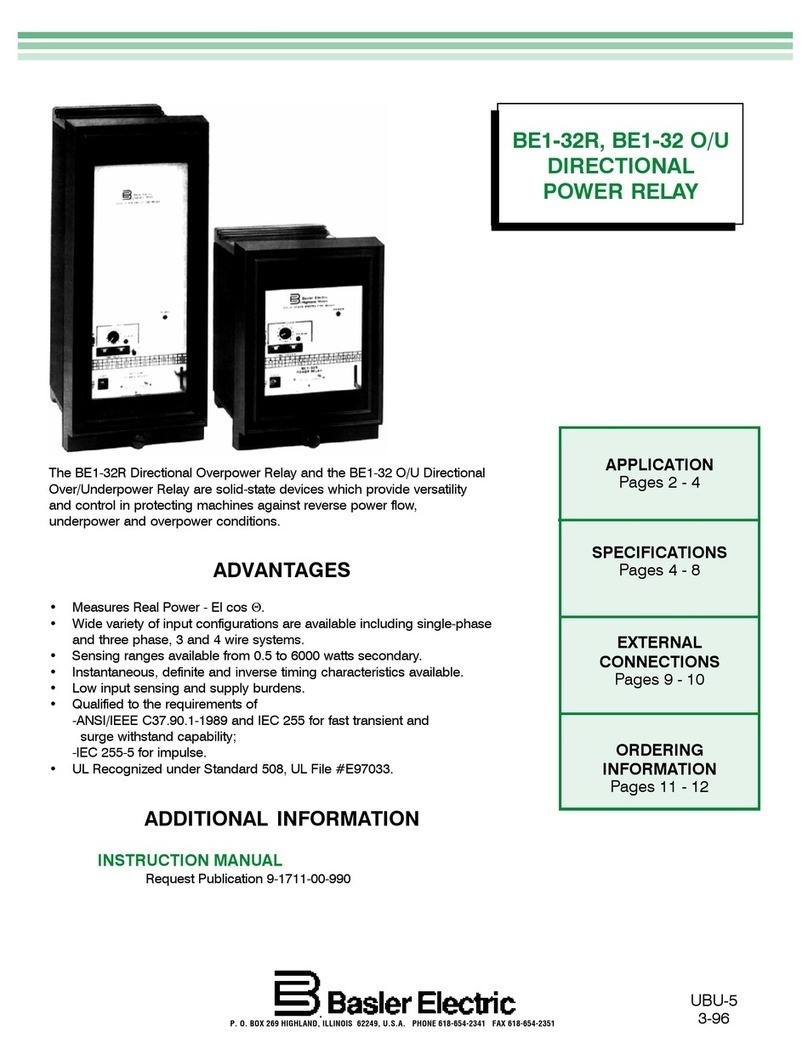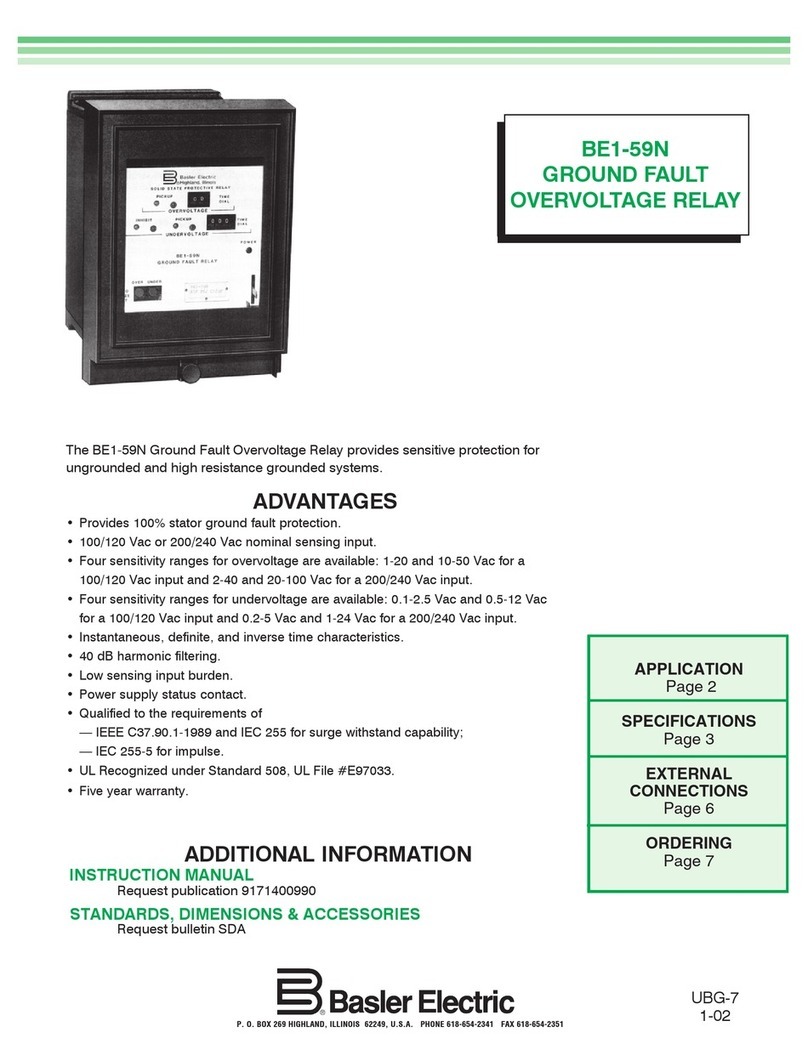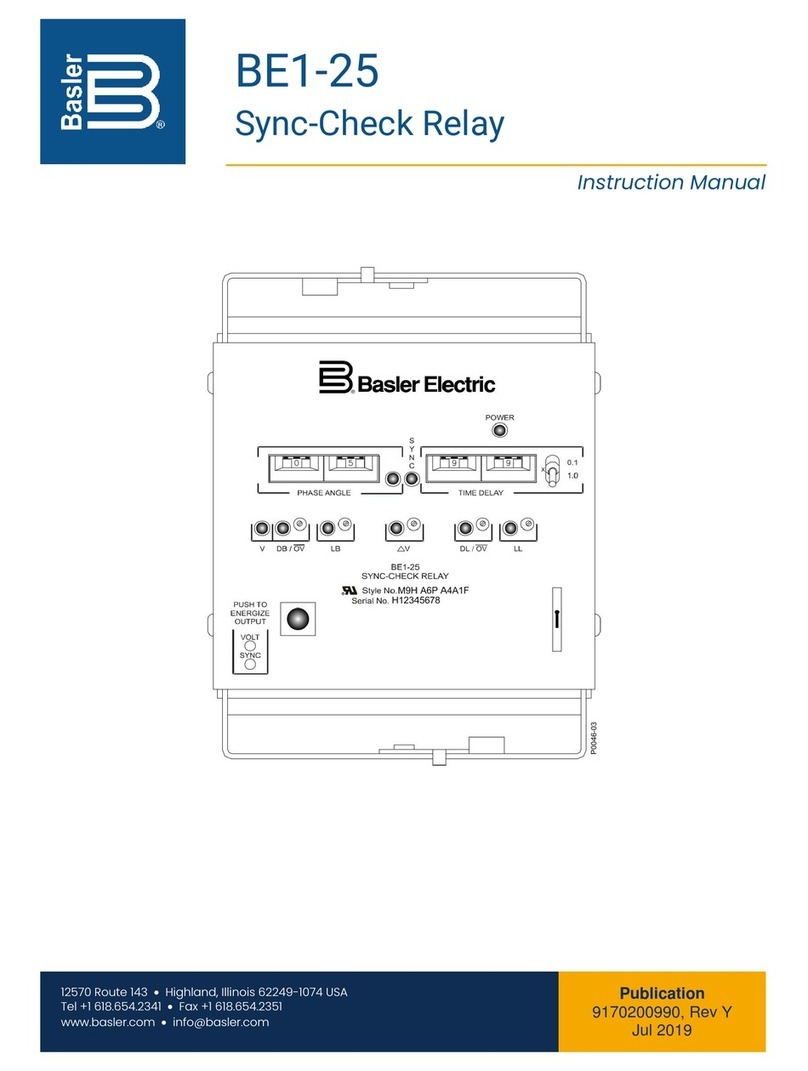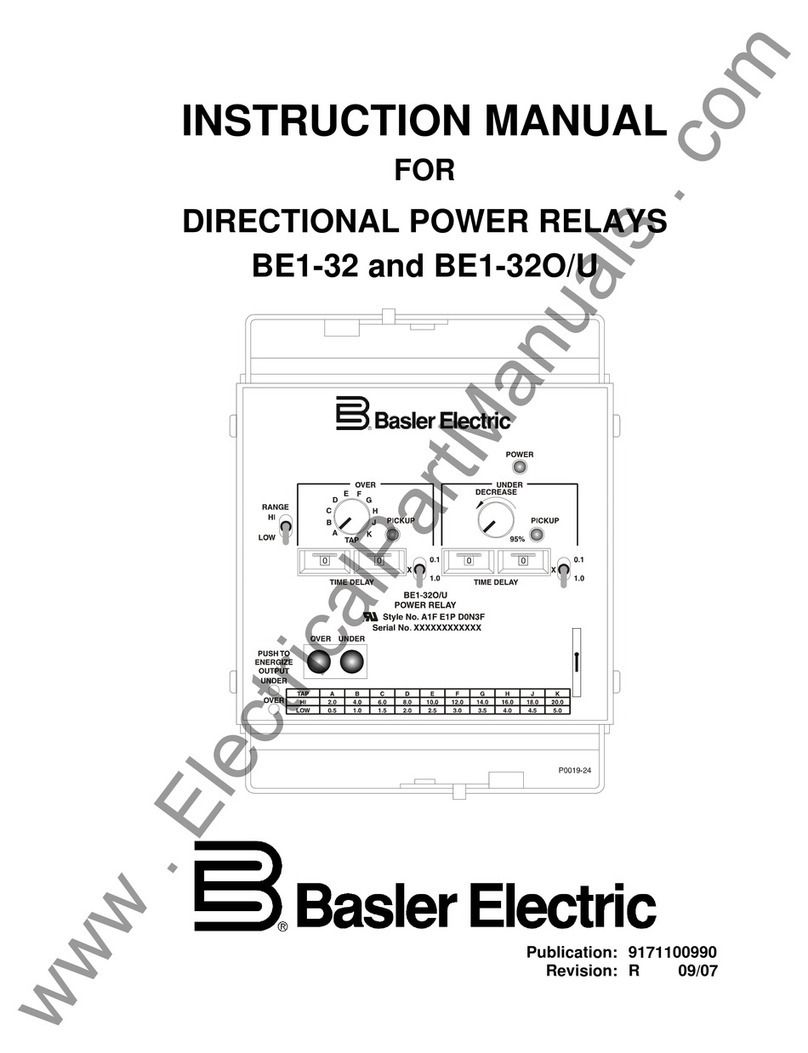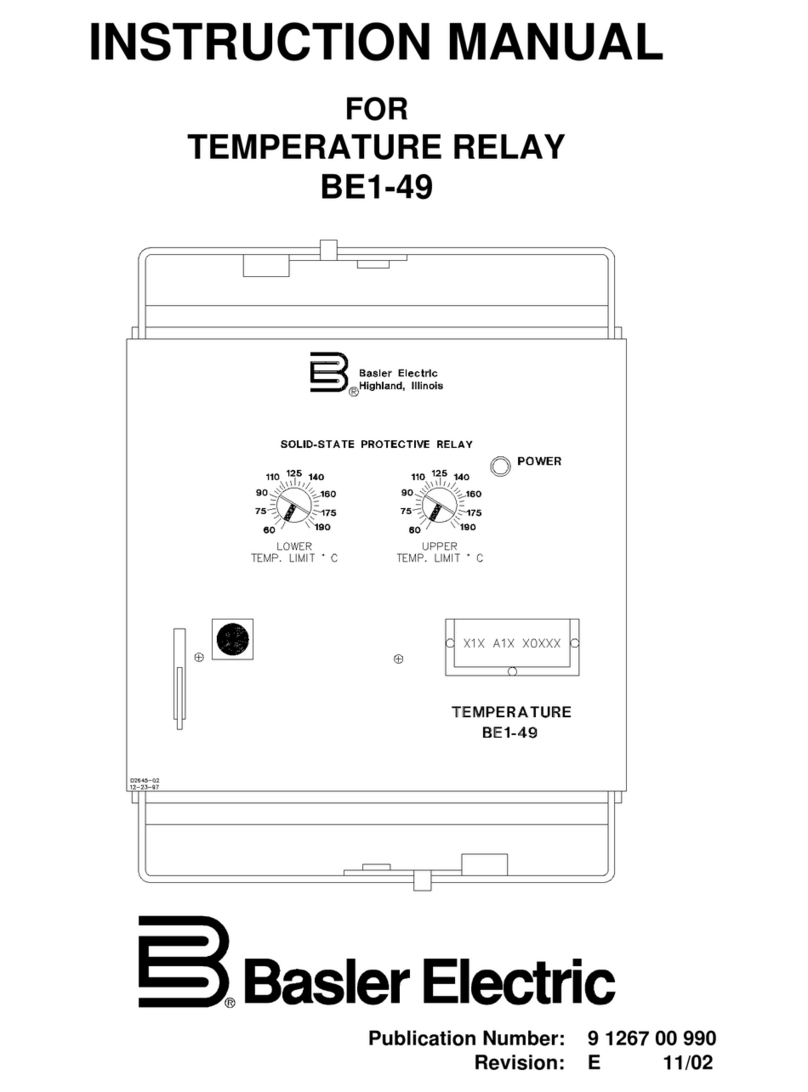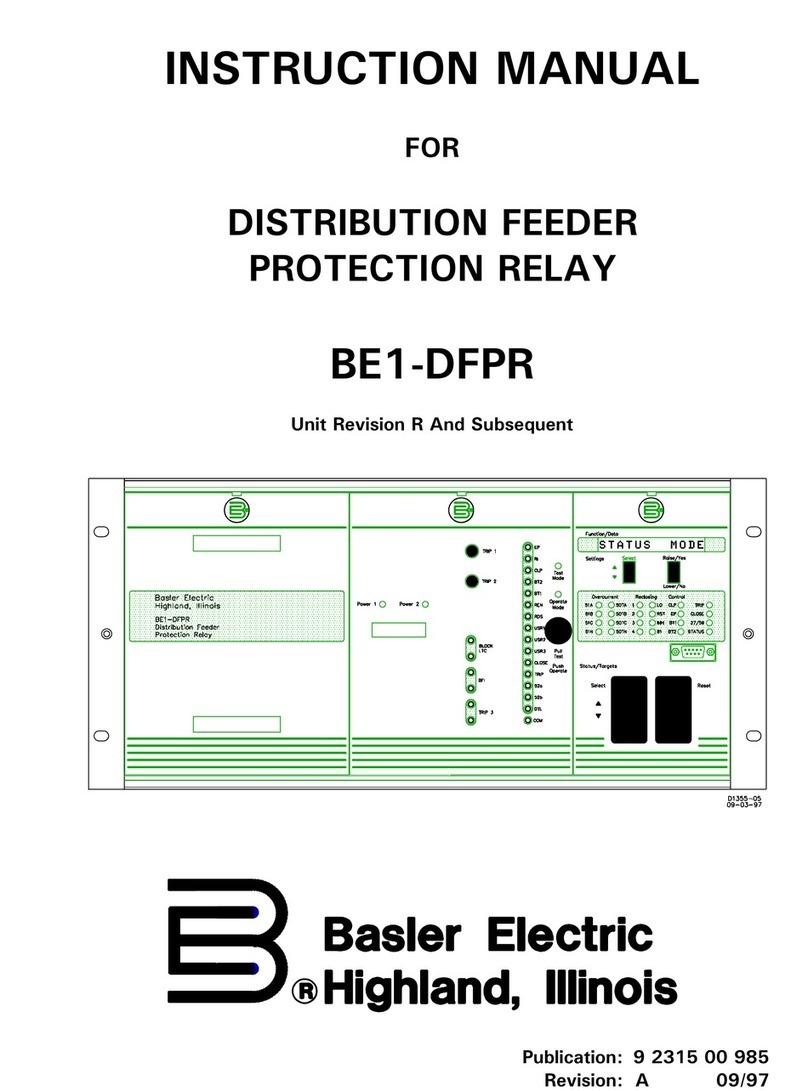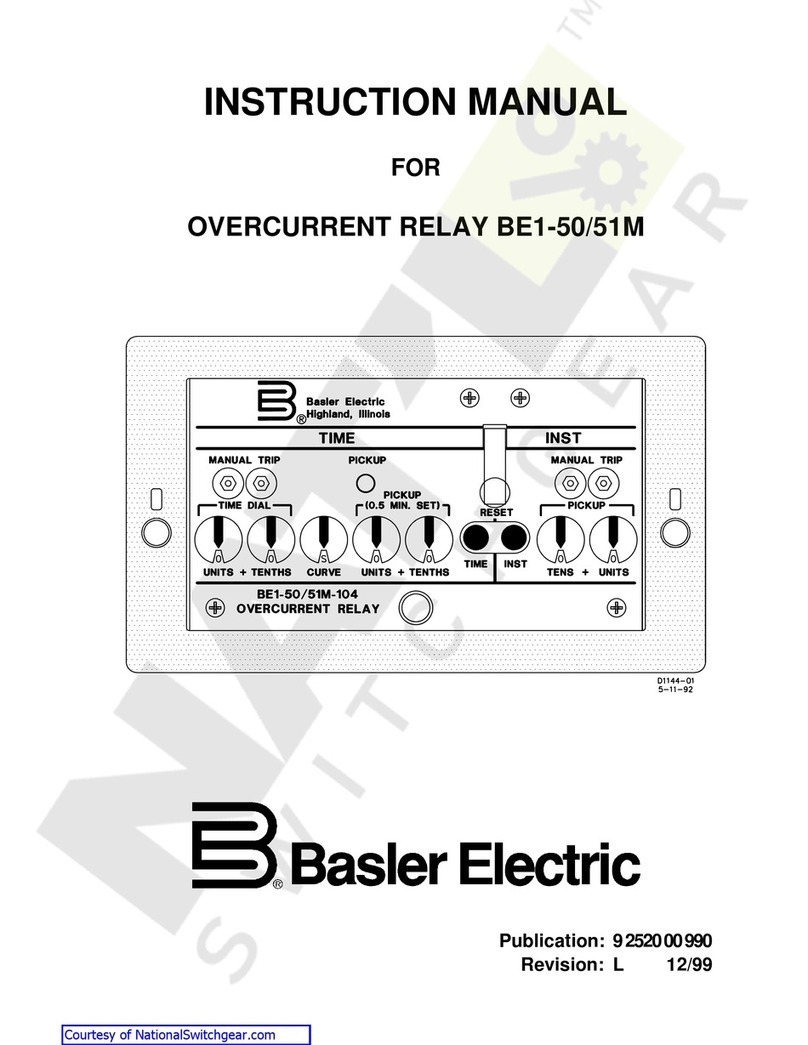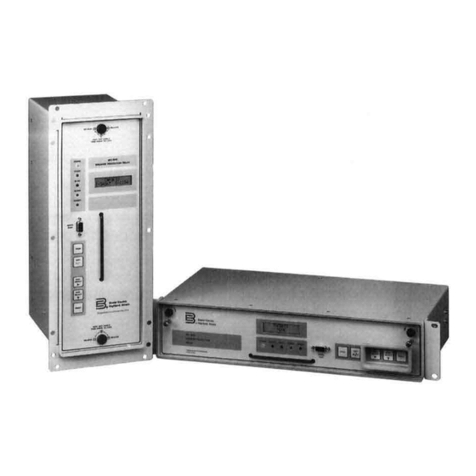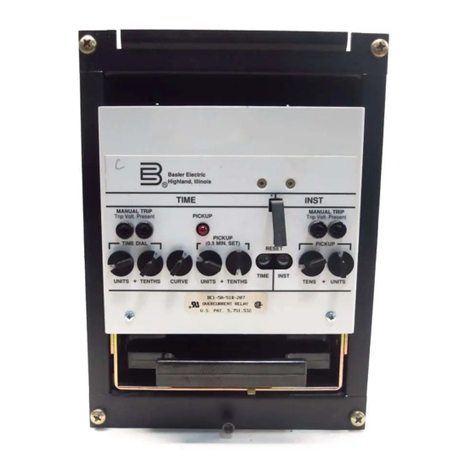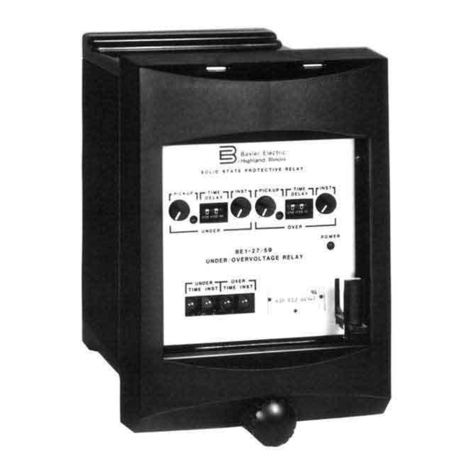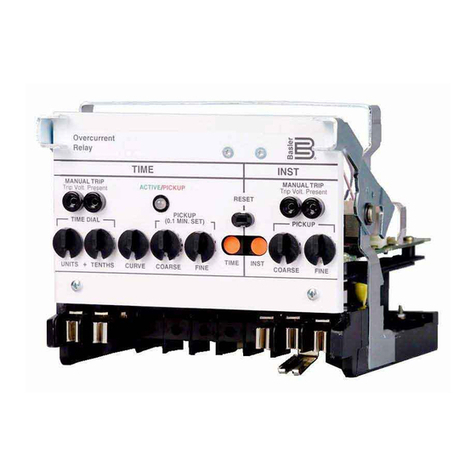
iv
CONTENTS - Continued
Section 4 OPERATION BY FRONT PANEL (continued) 4-1
Setting the Time Dial .............................4-3
Setting Tap Calibration ............................4-3
Setting Instantaneous Overcurrent Pickup .............4-3
Selecting the Time Overcurrent Characteristic ..........4-4
Selecting the CT Ratios ...........................4-4
Current Sensing Range ...........................4-4
Demand Period .................................4-4
Data Mode ........................................4-4
Defined ........................................4-4
Entering the Data Mode ...........................4-5
Automatic Scrolling ...............................4-5
Instrumentation Display ...........................4-5
Error Code Display ...............................4-6
Setting the Relay (Example) ...........................4-6
Example Defined ................................4-6
Calculating the Settings ...........................4-6
Entering the Settings .............................4-7
Section 5 OPERATION BY COMPUTER 5-1
Equipment and Procedures ...........................5-1
General ........................................5-1
Port Converter ..................................5-1
Baud Rate .........................................5-1
The Registers ......................................5-1
General ........................................5-1
The Secure Registers .............................5-1
Register Overview ...............................5-2
Instrumentation Registers ..........................5-2
Port Wiring ........................................5-2
Section 6 INSTALLATION AND TESTING 6-1
General ...........................................6-1
Relay Operating Precautions ..........................6-1
Dielectric Test ......................................6-1
Mounting ..........................................6-1
Connections .......................................6-2
Verification Testing ..................................6-2
General ........................................6-2
Scope .........................................6-2
Operational Test .................................6-3
Equipment Required ..............................6-3
Preliminary Steps ................................6-3
Time Overcurrent Pickup Test ......................6-4
Timing Test .....................................6-5
Instantaneous Overcurrent Pickup Test ...............6-6
Communications Test ................................6-7
General Verification ..............................6-7
Command Actuated Close .........................6-7
